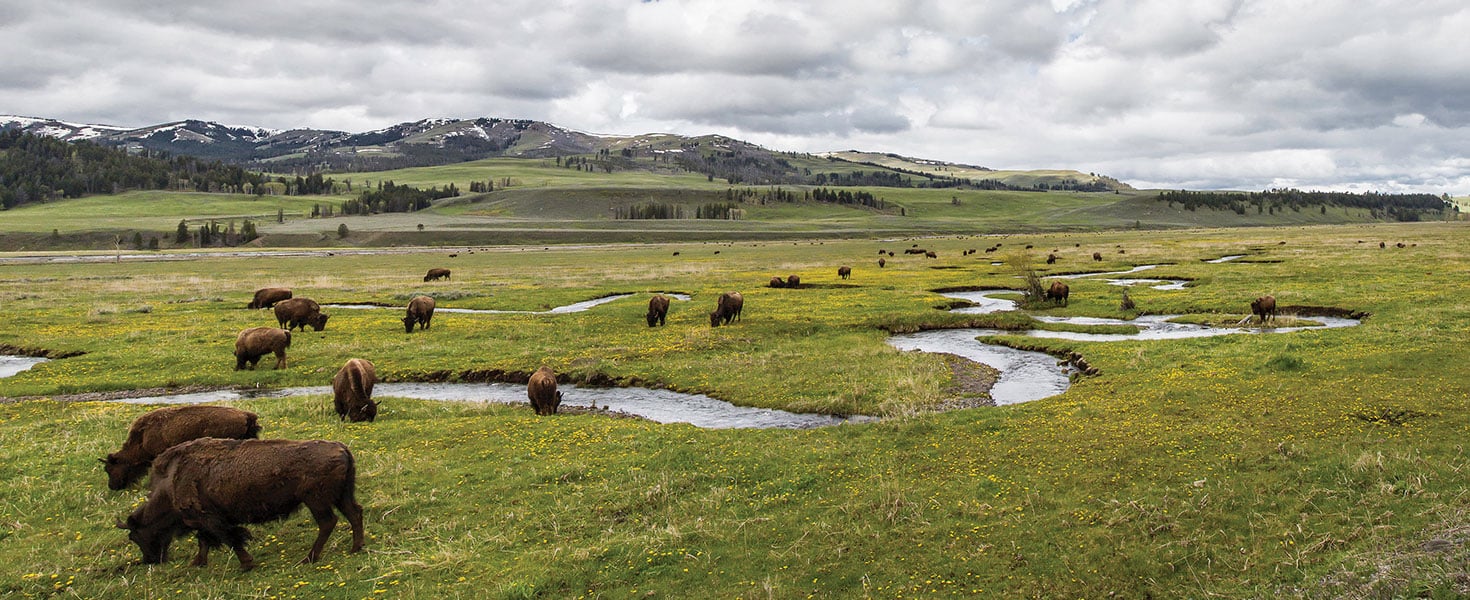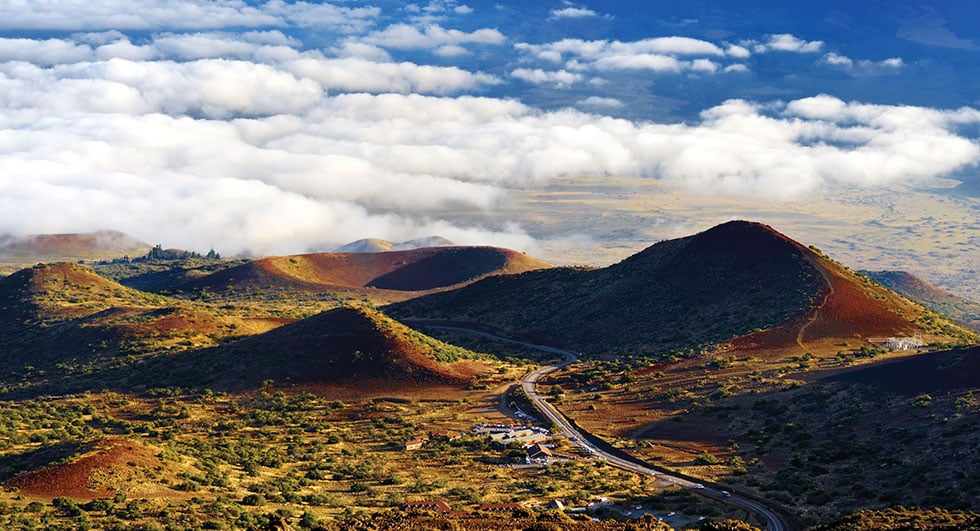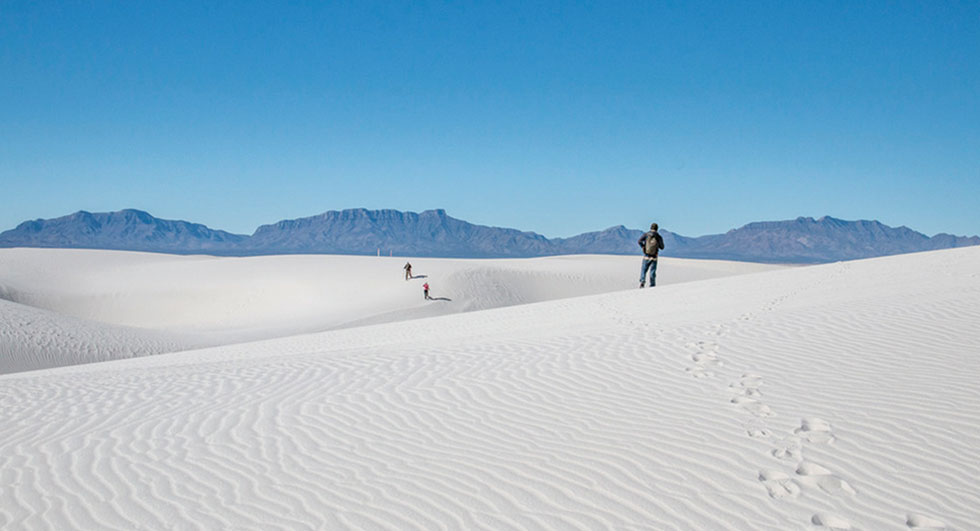6 of America’s Most Unusual National Parks
From forts, caves and volcanoes, to white sands, northern lights and geysers, wonders await at these national parks

Bison in Yellowstone National Park. Photo courtesy of NPS/Neal Herbert
Your image of the quintessential national park may bring to mind the Grand Canyon or Yosemite, or perhaps you envision vast expanses of forest, undulating mountain ranges or fascinating rock formations. US national parks encompass a wide range of landscapes, flora and fauna. All are amazing, but some are truly unusual. Here are six such parks that should be on every national park visitor’s must-see list.

DRY TORTUGAS NATIONAL PARK
Florida
The only way to reach this remote park, sitting some 70 miles west of Key West, is by boat or seaplane—and the best way to explore it? By swimming. That’s because 99 percent of this 100-square-mile park is composed of turquoise-blue waters brimming with marine life. On that 1 percent of dry land is 19th-century Fort Jefferson, which once served as a prison where Samuel Mudd, the doctor who set the broken leg of President Lincoln’s assassin John Wilkes Booth, was jailed. Along with fort tours and snorkeling, bird-watching abounds here.

HAWAII VOLCANOES NATIONAL PARK
The Island of Hawaii
Visitors come to this park in hope of seeing volcanic activity, and with two of the world’s most active volcanoes located here—Kīlauea and Mauna Loa—they often do. The volcanoes are not only a geological phenomenon but also a cultural treasure. Many Native Hawaiians consider Kīlauea to be the home of the volcanic deity Pelehonuamea. This 354,000-acre park—a UNESCO World Heritage Site—extends from craggy coastline through native rainforest to the 13,681-foot-high summit of Mauna Loa and conserves flora and fauna found only in the Hawaiian Islands. Besides hiking, you’ll want to motor along Crater Rim Drive and Chain of Craters Road, stopping along the way for spectacular must-photograph views.

MAMMOTH CAVE NATIONAL PARK
Kentucky
This UNESCO World Heritage Site and International Biosphere Reserve lays claim to the world’s-longest-known cave system, formed by acidic rainwater that opened channels in the rock. Archaeological evidence, including artwork carved into the rock walls, suggests that the cave was discovered by Native Americans 4,000 years ago before being rediscovered in 1798. To date, an astounding 426 miles of the cave system have been mapped. Taking a guided tour of the cave system leads you through a maze of keyhole, tube and other passages.

VOYAGEURS NATIONAL PARK
Minnesota
Nearly half of this 218,055-acre park situated in pristine northern Minnesota wilderness is covered by water, so boating is big here. One of the best ways to enjoy the park is aboard a rented houseboat, providing easy access to the farthest reaches of the park without having to tent-camp. No boat? No problem. A wide range of guided boat tours and ranger-led programs also delights. A designated International Dark Sky Park, Voyageurs also offers some of the best northern lights viewing in the contiguous US.

WHITE SANDS NATIONAL PARK
New Mexico
Imagine sledding down a mountain blanketed in white—and it’s not even a bit chilly outside. Or walking along glistening white sand—only there’s no ocean in sight. You, too, can have these iconic experiences on the magnificent white sands that make up the world’s largest gypsum dunefield. Extending for some 275 square miles in the Chihuahuan Desert, about half of it in the national park, the dunefield was left behind by evaporating rainfall and snowmelt from the surrounding gypsum-composed San Andres and Sacramento mountains. Besides sledding and hiking, you can drive or bicycle along Dunes Drive.

YELLOWSTONE NATIONAL PARK
Idaho, Montana and Wyoming
Established on March 1, 1872, Yellowstone boasts more superlatives than being the world’s first national park. Sitting atop a volcano, it also holds more than half of the world’s active geysers—Old Faithful included—with anywhere between 500 and 700 geysers erupting annually. Wildlife reigns supreme throughout this 2.2-million-acre park, home to one of the largest elk herds on the continent, one of the country’s few grizzly populations and the largest free-roaming wild herd of bison in the US.
